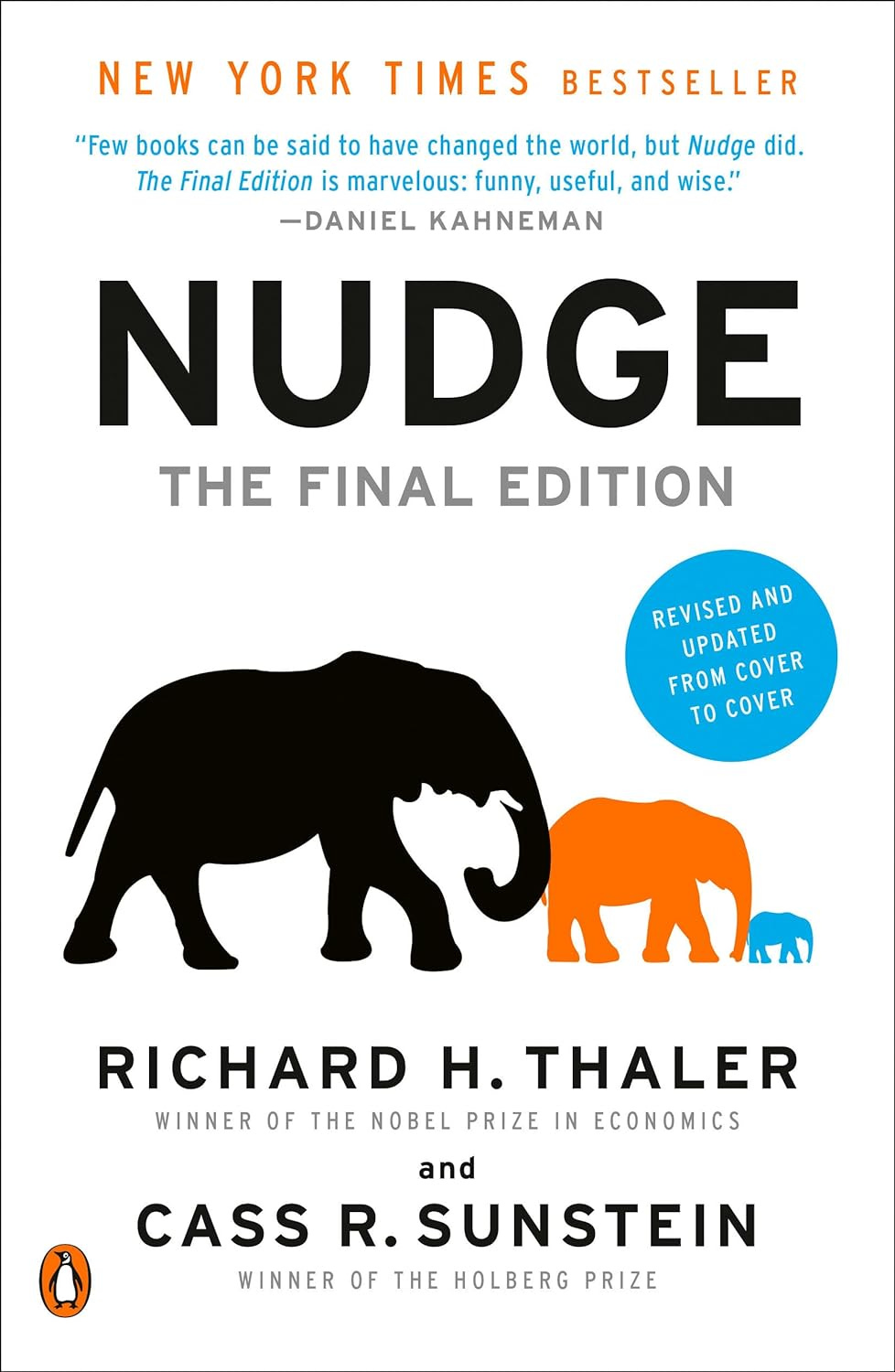NudgeTech: The Subtle Science of Workplace Collaboration
How Understanding Human Decision-Making Reshapes Work
Working with leaders in AI + Human adoption, I've kept my eye on a quiet revolution unfold in how companies approach workplace collaboration. It's not based on another communication platform or team-building exercise, but on something more fundamental: the science of how people actually make decisions.
They're calling it "nudgetech" – AI-powered tools that deliver personalized, contextual "nudges" to employees throughout their workday. Think of it as behavioral science with a digital upgrade.
Based on the Nobel Prize-winning behavioral science framework by Richard Thaler and Cass Sunstein, who showed that small environmental changes can dramatically influence decision-making while preserving freedom of choice. But the roots go deeper, to Amos Tversky and Daniel Kahneman's groundbreaking work on cognitive biases and decision-making.
Kahneman taught us something counterintuitive: humans aren't the rational actors traditional economics assumed. We're predictably irrational, relying heavily on our fast, intuitive, emotion-driven responses. Nudgetech doesn't fight this reality – it works with it through thoughtful design.
We're seeing these tools reshape workplaces by:
Prompting employees to use a colleague's preferred communication channel right when they're about to reach out
Reminding managers about team members' working styles before one-on-ones
Suggesting "do not disturb" periods when someone needs focused work time
Generating personalized communication suggestions for difficult conversations
Why This Matters Now
Many workplaces are experiencing a growing collaboration crisis:
Gartner's research shows employee satisfaction with workplace collaboration has fallen from 36% to just 29% in three years. Nearly 60% of employees say they're not getting adequate coaching. Meanwhile, executives keep throwing the same solutions at the problem – more training sessions, updated policies, company-wide mandates.
These approaches fail because they're one-size-fits-all. They can't address the personalized, moment-to-moment guidance people need in today's complex work environments. As teams become more diverse in their communication styles and working preferences, the gap between mere connection and true collaboration widens.
The Evidence Is Compelling
Traditional approaches - training sessions, policy changes, company-wide mandates- simply aren't cutting it. These one-size-fits-all solutions fail to address the personalized, moment-to-moment guidance today's complex work environments demand. As workforces grow more diverse in their communication styles, cultural norms, and working preferences, the gap between connection and real collaboration widens.
The Kraft Heinz Company's implementation shows the impact: managers who regularly engaged with nudges were rated significantly more effective by their teams, while those ignoring nudges were 2.5 times more likely to be flagged as needing support.
Virgin Atlantic's experiment with pilot behavior was also impressive. By implementing simple nudges around fuel usage, they cut costs by $5.37 million and reduced carbon emissions by 21,500 metric tons in just eight months. The most basic intervention – a letter telling pilots their behavior was being observed – changed habits immediately.
Making it work
The best implementations I've seen adapt to different contexts and recognize a fundamental truth: logic alone doesn't change behavior. As BCG's research shows, effective change comes from addressing the emotional, social, and contextual factors that influence our decisions.
Modern nudgetech isn't just about reminders. Behind the scenes, AI engines analyze everything from survey responses to performance metrics and communication patterns, identifying both what message will resonate and when it should be delivered.
"A nudge is not a notification," as one practitioner told me. "It's a behavioral tool that evolves with each employee's needs and context."
I've tracked successful implementations following a common pattern:
Collecting meaningful data about work patterns and preferences
Translating that data into actionable recommendations
Delivering science-backed nudges right in the flow of work
Measuring concrete impacts
Building sustained behavior change over time
For hybrid teams, these nudges can protect focused work while maintaining connection. During organizational changes, it helps break intimidating new processes into manageable steps with timely guidance.
What has impressed me most is how nudgetech can support neurodiverse workforces through flexible reminders, visual task management, and progress-based (rather than time-based) deadlines – creating inclusion without singling anyone out.
What to Look For
If you're evaluating these tools, focus on:
Personalization capabilities. Does it adapt to individual differences or just push the same prompts to everyone?
Workflow integration. The best tools feel invisible until the moment you need them, appearing within your existing systems.
Privacy safeguards. There's a fine line between helpful and intrusive. Once crossed, trust is hard to rebuild.
Measurable outcomes. Look for platforms that connect improved collaboration directly to business results, like Virgin Atlantic did with fuel savings.
Testing framework. The most effective implementations start small, experiment with different approaches, and scale what works.
Accountability mechanisms. People care what others think. Good nudgetech leverages this through peer partnerships or team progress tracking.
Leadership Principles
For executives considering this approach, I recommend five guiding principles:
Prioritize choice at every level. Effective nudges work with employees' natural tendencies, not against them.
Be transparent about purpose. When people understand why nudges exist and how they benefit personally, adoption soars.
Celebrate wins instead of highlighting problems. BCG's research shows that recognizing positive examples works better than emphasizing shortcomings.
Break change into bite-sized steps. We all overestimate our ability to change. Effective nudges connect to small, achievable actions.
Test before scaling. Start with a pilot for a specific goal with one team. Use the data to learn what works in your unique culture.
The Bigger Picture
What’s fascinating is how it workplace dynamics can be reshaped by altering the environment while preserving individual agency. These tools achieve what strict mandates never could: lasting change that comes from choice rather than compliance.
Companies using these approaches consistently report that employees become 2.4 times more likely to take positive actions, teams show 10% productivity gains, and turnover drops by 8%.
In our increasingly disconnected workplace, nudgetech offers something precious: a way to guide without controlling and connect without demanding. It meets people where they are, making better choices the path of least resistance rather than requiring constant willpower.
For organizations willing to implement these tools thoughtfully, the promise is both practical and profound: workplaces where collaboration feels natural because the environment itself makes better choices easier, not mandatory.
Additional Reading:
Thaler, R., & Sunstein, C. (2008). Nudge : Improving decisions about health, wealth, and happiness. New Haven: Yale University Press.
ProQuest, & World Health Organization. (2009). Global health risks mortality and burden of disease attributable to selected major risks. Geneva, Switzerland: World Health Organization.
Nudgetech, neurodiversity & collaboration: for the new workplace by Rachel Mantock
Sean Wood is the founder of Human Pilots AI — helping Executive Leaders successfully implement AI into their organizations.




